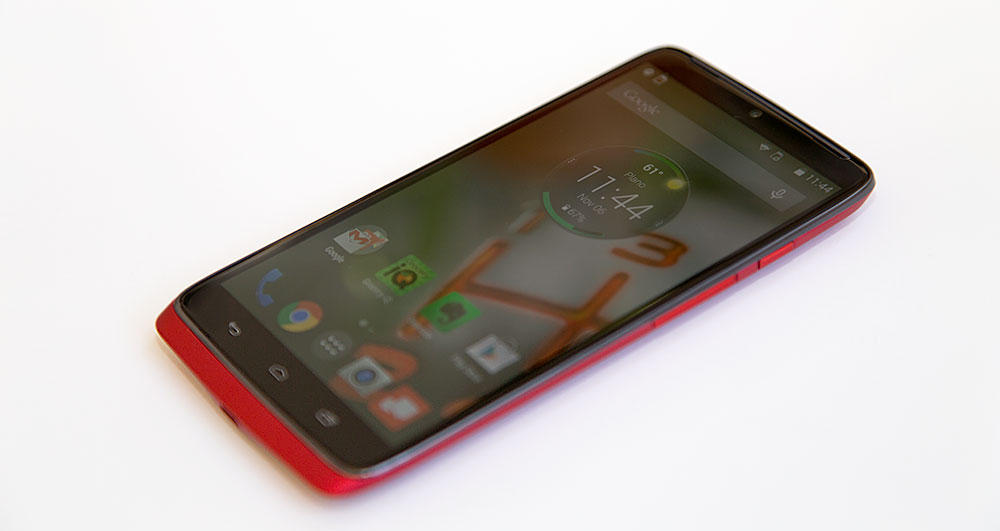The Motorola Droid RAZR MAXX wasn't completely designed to make you Droid RAZR buyers feel less enthusiastic about your purchase a few months back. This isn't a Bionic to Droid RAZR story. The MAXX is the exact same phone as the Droid RAZR, but with a higher capacity battery. The RAZR MAXX has a 3300 mAh battery vs. 1870 on the Droid RAZR, and it's sealed inside just like the original. That means you get seriously longer battery life, and that addresses our one serious concern about the Droid RAZR. Not that it terrible bad battery life or a small battery, but since you can't swap in a spare, you are at the mercy of a charger or portable external battery pack if you need to go for long periods of time with power-hungry LTE 4G turned on.

This Android 2.3 smartphone will eventually get an upgrade to OS 4.0 Ice Cream Sandwich. I still love the look, and it's hardly thicker or heavier than the Droid RAZR despite the serious 76% increase in battery capacity. It measures 0.35" thick vs. 0.28" for the first Droid RAZR, and is just over a half ounce heavier. It feels better in hand because it isn't so impossibly thin, and battery life is truly excellent. I managed two days with light to moderate use on a charge, and a full day with very heavy use.

The Droid RAZR and RAZR MAXX.
The Motorola Droid RAZR MAXX has a 4.3" qHD Super AMOLED display that's very colorful and good looking to my eye. It may not push as many pixels as 720p Android smartphones like the Samsung Galaxy Nexus, but it has deep blacks and vivid colors with little pixelation. It runs on a dual core 1.2GHz TI OMAP 3340 CPU with a gig of RAM and 16 gigs of internal storage. Verizon includes a 16 gig microSD card, so you've got lots of storage out of the box. The MAXX has the same just OK 8 megapixel rear camera that can shoot 1080p video and a front video chat camera.

Phone and Data
Voice quality is excellent for both incoming and outgoing voice. Data speeds on Verizon's LTE network are good, but the RAZR and RAZR MAXX can't compete with Qualcomm chipset phones like the HTC Rezound and LG Spectrum if you're in a weak LTE area as we are. The RAZR MAXX will generally stick to 3G rather than waffle between 3G and 4G all day, which is kinder to the battery. But our Spectrum and Rezound tenaciously hold onto our area's weak LTE signal with no waffling whatsoever. Battery Life
As noted, the RAZR MAXX is unbeatable for LTE battery life. It's like having an extended battery permanently installed, and the phone had no trouble lasting through the day with heavy use that included push email, calls, GPS navigation and streaming video from Netflix for an hour. The only drawback? When that ample 3300 mAh battery is depleted, you'll need a charger because you can't swap in a spare battery. Performance Pinch zooming is fluid, apps launch quickly and Adobe Flash Player 11 is fairly smooth with fairly responsive controls (Flash isn't slickly fast and smooth on Android in general). The phone has 1 gig of RAM (standard for Motorola Webtop phones) and 16 gigs of internal storage complimented by a 16 gig microSD card. The phone runs Android OS 2.3.6 with Motoblur (though Motorola has toned down Motoblur and no longer refers to it by name since it wasn't well-received in its first year)










